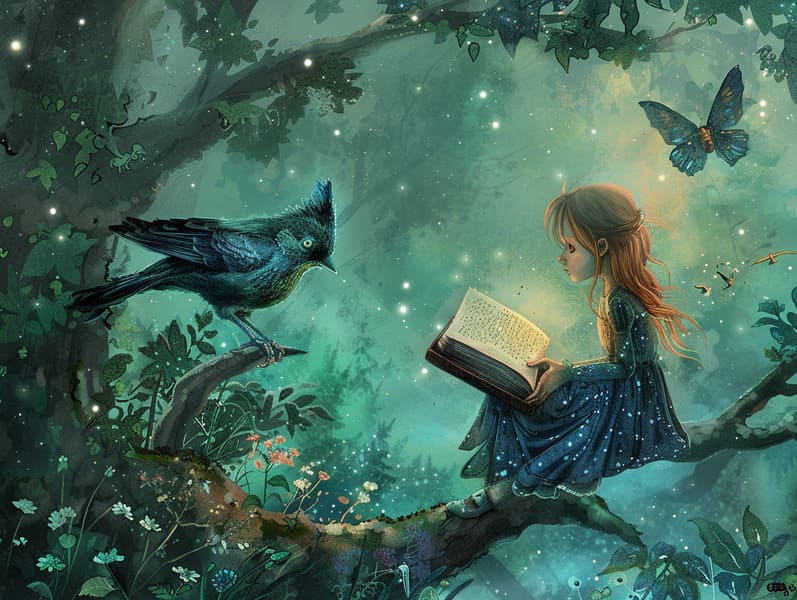Delving into the Background of Children's Fairy Tales and Its Unchanging Splendor.
Delving into the Background of Children's Fairy Tales and Its Unchanging Splendor.
Blog Article

Grimm's fairy tales have long histories. These stories have been shared from one generation to the next far before they were ever recorded. They developed from a variety of backgrounds, including African traditions. They were initially narrated among grown-ups, often carrying themes and messages related to the societal norms and beliefs of the time.
The Brothers Grimm, the two Grimm brothers, were among the first to gather many of these beloved narratives. Their anthology, "Grimm's Fairy Tales," included narratives like "Ashenputtel," "The Bread Crumb Trail," and "Little Snow White," which have since become mainstays in the world of timeless fairy tales. Similarly, H. C. Andersen's fanciful tales, such as "The Sea Maid," and "The Little Duckling," have enchanted hearts worldwide, securing their place in the pantheon of timeless fairy tales.
Even though they are old, traditional fairy tales remain as relevant as ever, especially as children's night stories. These charming stories are now available in different formats, including artistically illustrated books, charming animations, and online fairy tales.
Their unwavering allure can be linked to several enchanting factors:
Crucial Morals: Ancient fairy tales often whisper important moral lessons. Stories like "The Shepherd Boy and the Wolf" teach the benefit of truthfulness, while "The Story of the Tortoise and the Hare" stress the values of tenacity and humility. These stories offer young readers clear distinctions between truth and falsehood, guiding their moral compass in a soft yet deep way.
Compassion and Insight: Traditional fairy tales frequently feature protagonists facing obstacles and hardships, inspiring readers to resonate with their struggles and back their triumphs. For instance, "Beauty's Beast" emphasizes the benefit of looking past the exterior to know the true character of a character, cultivating warmth and insight.
Cultural Awareness: Many classic fairy tales are deeply ingrained in the cultural contexts from which they arose. Learning from these narratives can provide informative snapshots into different historical contexts, advancing a sense of global understanding and respect.
Inventiveness and Imagination: The whimsical elements in traditional fairy tales—wizardry and magic—fuel children’s dreams. These tales lead readers to enchanted realms, enlivening innovative dreams and a sense of awe that lasts a lifetime.
Classic fairy tales are not only whimsical but also edifying. They provide captivating tools in nurturing various thinking and feeling skills in young readers. When classic fairy tales are told out loud, they enhance speaking abilities by offering new terms and intricate sentence structures. This practice also promotes auditory perception and mindfulness, as kids pay close attention, prepared to see what happens next.
Furthermore, discussing the themes and characters of old fairy tales can advance thinking skills and logical thinking. Young ones are instructed to identify patterns, foresee events, and get cause and effect. These reflections also benefit children express their thoughts and feelings, promoting their emotional intelligence.
In today’s cyber age, the presence of internet fairy tales has made these narratives more within reach than ever. Web-based platforms and digital apps share broad selections of popular fairy tales that can be looked at or played anytime, anywhere. Fairy tales read aloud are particularly well-liked, supplying an interactive way for children to engage with these charming stories. Sound books and voiced videos take characters and settings to life, often joined by bewitching background sounds and songs that boost the narrative experience.
The lasting allure of classic fairy tales lies in their ability to shift to modern society while retaining their core values. Contemporary updates of these narratives often show more diverse figures and modern settings, making them understandable to today’s audience. However, the fundamental themes of braveness, charity, and honesty remain unchanged, continuing to resonate with young readers of all ages.
Traditional fairy tales also offer a sense of protection and knownness. They showcase a organized narrative with a recognizable beginning, middle, and end, often ending with the termination of conflicts and the triumph of justice over injustice. This predictability can be calming for young readers, rendering a sense of dependability in an shifting world.
Old fairy tales continue to charm and inform new generations, maintaining their wonder and meaningfulness in modern society. As nighttime stories for kids, they present to a perfect blend of delight and instruction, sustaining moral values, empathy, and creativity. The accessibility of digital storybooks and the popularity of fairy tales recited make sure that these ancient stories remain accessible to new generations.
By conserving and making known these narratives, we continue to extol the rich tapestry of creativity and cultural heritage. Whether you are exploring a artistically illustrated book, delving into a online library, or hearing an narrated book, the wonder of Grimm's fairy tales is always within reach. These fairy tales show us of the lasting ability of stories and its ability to join us across generations and cultures.
Regardless if you are exploring a gorgeously illustrated book, browsing a web collection, or listening through an voice book, the grace of Grimm's find it here fairy tales is always within reach.
These fairy tales point out of the undying effect of tales and its ability to hold us together across generations and cultures, making a tie that enchants and educates alike.